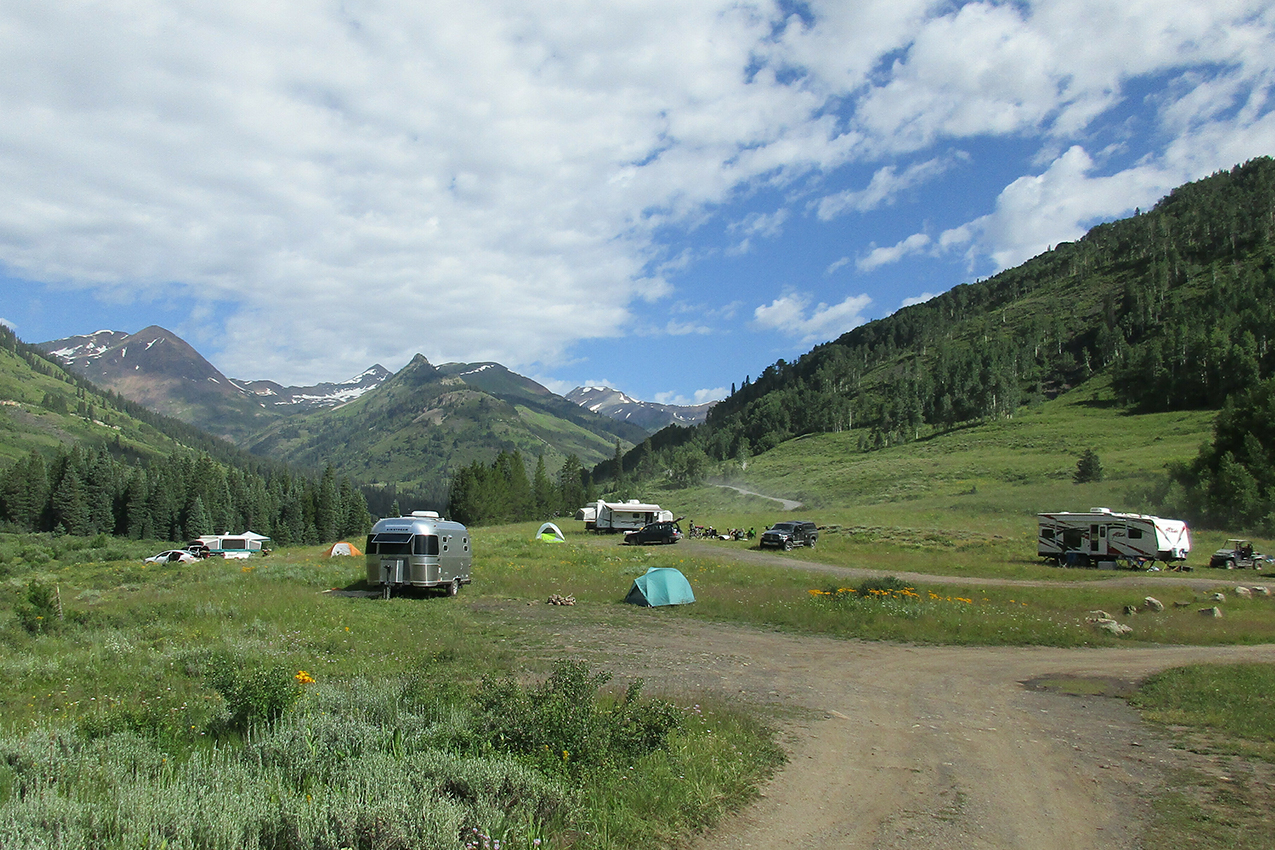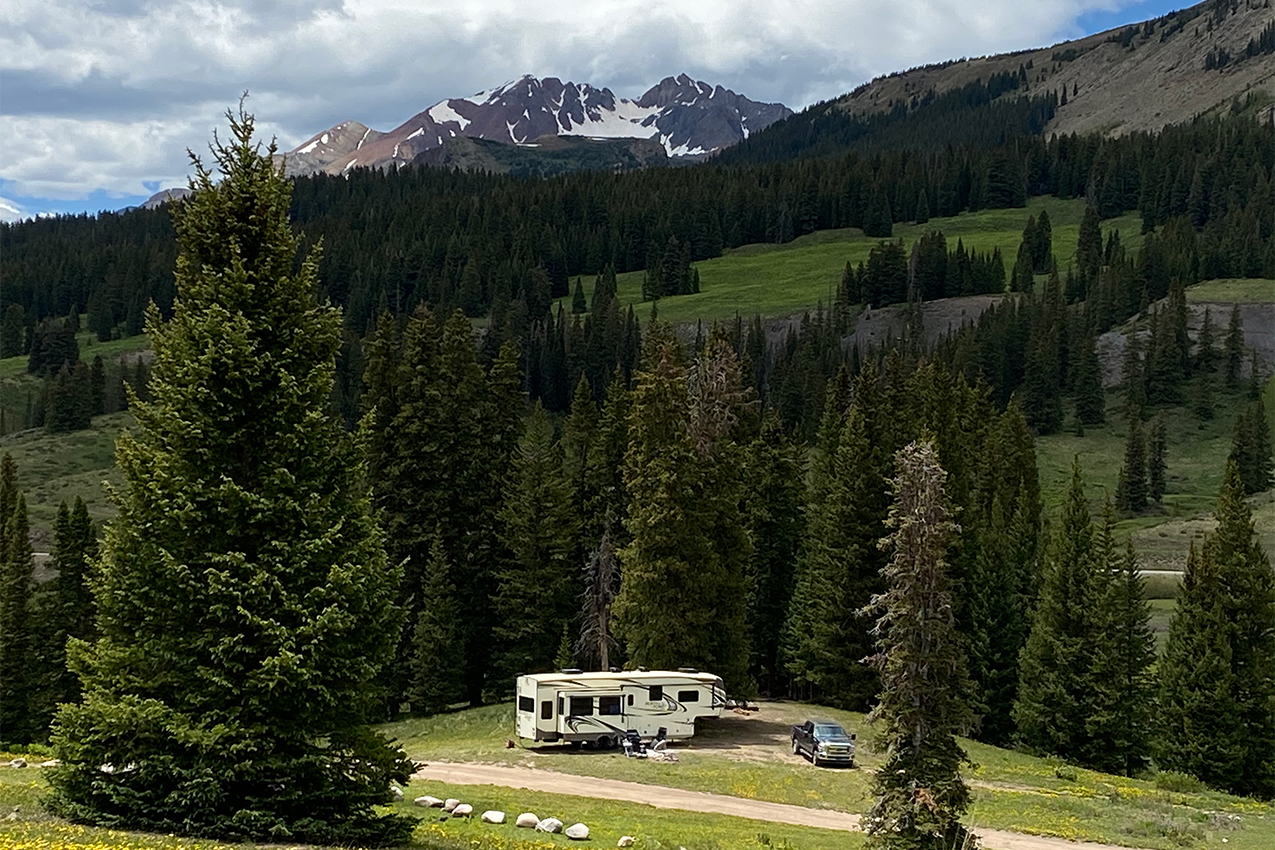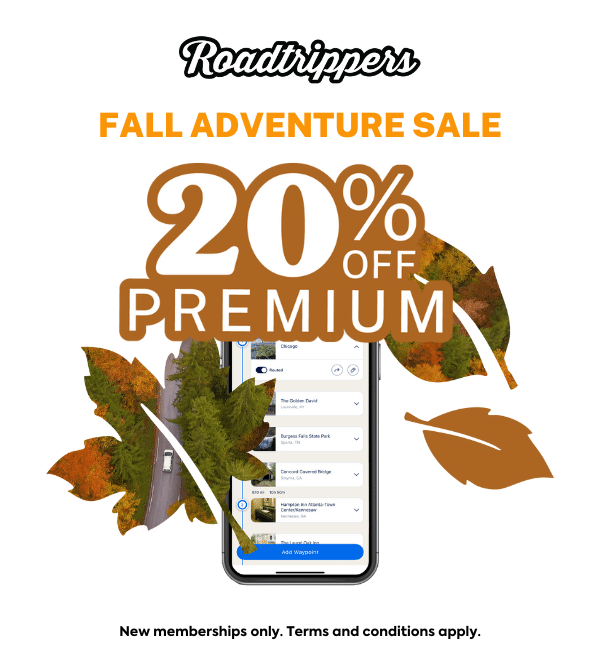“There’s like Nomadland, an Oscar buzz film, that shows this experience, and then there’s a lot of different people with Overlanders, boondocking or ‘van life,’ and none of them would be possible without public lands,” said Matthew McCombs, the District Ranger at Gunnison Ranger District in Gunnison National Forest, Colorado. “And as the excitement around that sort of thing increases, so does the pressure on the landscapes that have caused us to take these steps.”

Slate River Designated Campsite 4 | Gunnison National Forest
McCombs is discussing the massive jump in visitors he has seen in his district as more and more people explore popular destinations in western states like Colorado’s well-known Crested Butte region.
Like many areas, there has been a recent explosion in popularity in these wild places. Add in the pandemic, and people looking for ways to recreate and camp closer to home, and sometimes the crowds can become unmanageable. That’s why McCombs’ district and other local officials in the Gunnison Region have made changes to protect the wilderness and sustainability while also allowing visitors continued access. These changes may require some extra planning from visitors who intend to head to the beauty of Crested Butte this summer.
“It became really challenging to figure out where they (campers) could go. Prior to the increase from COVID, we’ve also seen a sizable uptick, primarily due to the growth in population across the west as well as changes in technology that have increased a lot of individuals’ interest in backcountry-style camping,” said McCombs. “Basically what was happening was because of the substantial amount of visitation, it was leaving campers who couldn’t find an existing site to create new sites.”
This challenge has sparked a change—the popular Crested Butte area will move from traditional dispersed camping, which allows people to pull up and camp anywhere accessible, to designated dispersed camping, which means campers can only stay in spots designated by the National Forest Service.
While past visitors weren’t always in violation of the rules when they set up new campsites, too many have ended up on steep slopes or other unstable soil, which leads to resource damage and other issues. Other spots were set up in areas they shouldn’t have been, like those too close to water sources.
Forest officials say this plan to create designated dispersed campsites has been in the works for a while now and will also take some time to implement. They’re looking at summer 2021 as a transition year, as only some of the areas around Crested Butte will be set up with the newly designated sites, and others are still in the works.
[camp id=”728, 22986, 31482″ align=”center” url=”https://www.campendium.com/colorado/crested-butte” text=”More Camping in Crested Butte, Colorado”]
“Really, this plan will come into full fruition in the summer of 2022,” said McCombs. “We’ll do our absolute best to have as many people on the ground to help campers with questions they may have about the policy, but we’re also going to be extremely flexible with implementation this year.”
McCombs says those who do end up in an area with designated camping have a few things to look for, including a sign with a tent, marking it as an established site, as well as a provided fire ring. Rangers will keep people out of old campsites that visitors established and that officials believe are not sustainable and need time to regrow and heal.
“To be fair, I do expect a tiny bit of chaos as it comes to shepherding folks through this transition, but we’re going to do our absolute best to have robust field presence and good information in all contacts throughout the county and the general vicinity to give the best information we can,” said McCombs.
The Gunnison Ranger District is also prepared to help campers with questions to follow the new rules. They will direct anyone to other sites or different camping areas if the designated sites become full, something they say will happen.
Forest officials expect another record-breaking year, and they want people to try and experience new areas and spots that may not get as much attention on social media or blog posts. That’s why having a plan will be necessary.
“We expect a record number of people to visit. We’re also going to strongly encourage people who come to visit with a plan B,” said McCombs. “If you get off late in the day, say you’re coming from Denver and leave at 4:00 on a Friday, you should expect the majority of the drainages (camping areas) in and around Crested Butte to be full.”

Lizard Head Pass Dispersed Camping | Uncompahgre National Forest – Photo by: Jlpoober
McCombs says there are millions of acres of land to explore in the area between Grand Mesa, Uncompahgre, and Gunnison National Forests, so people are encouraged to try and find something off the beaten path. He also says there are plenty of close options to Crested Butte, including heading south to Highway 50 near Lake City and in the Taylor Park area.
While the COVID-19 pandemic has brought an even bigger increase in visitors to the outdoors, many national forests and parks have been seeing an increase in recent years, and officials like McCombs say he doesn’t expect this trend to end anytime soon. And while some people may go back to interests and hobbies that existed before the pandemic, plenty will continue to enjoy the outdoors, so he and other officials will continue to evolve and change how access works to parks to protect these places for the next generations.
“I would suspect based on a lot of the interactions with people based out in the field that people have a renewed interest in this opportunity and a renewed interest in the experience of what only America’s national forests can provide.”
Check out all of the new designated dispersed campsites in Crested Butte.

